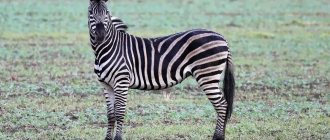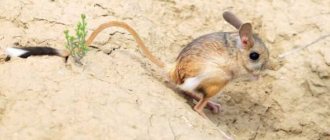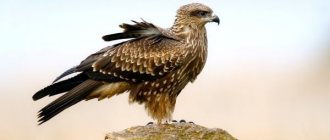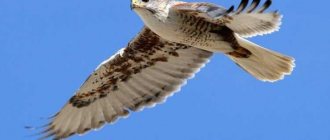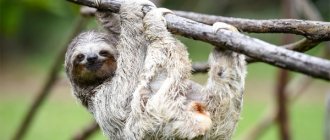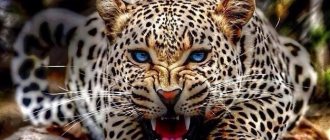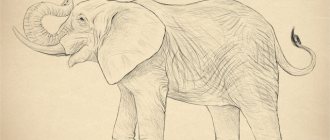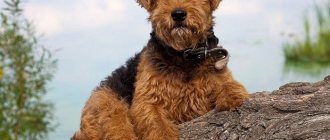The lion, or as it is also called the “king of beasts,” is one of the largest predators in the fauna. It belongs to the cat family. This animal has many varieties, and in addition, there are hybrids that are the result of mixing species.
Each species has its own individual characteristics, but they all have something in common.
Body type
If you look at a photograph of a lion, you will notice that it is very similar to a big cat. This animal is the largest representative of the cat family. In size it can only be inferior to tigers.
He has a flexible and agile physique, with well-developed muscles in the neck and front pair of paws, on which claws are located, reaching a length of seven centimeters. A large head, an elongated muzzle and a powerful jaw distinguish this animal from the rest.
Natural enemies
Due to their strength and size, adult individuals have virtually no enemies in their natural habitat. Cubs and weak animals can fall prey to other predators with a similar diet: cheetahs and leopards. Lions have a special relationship with hyenas. In all regions where the ranges of these predators intersect, lions and hyenas are sworn enemies. The enmity between them goes far beyond food rivalry. Whenever possible, they try to kill each other, and since hyenas also live in packs, victory does not always go to the larger and stronger lion. In the water, the lion's opponent may be a crocodile.
A significant proportion of adult lions and cubs are killed by members of their own species. Adult males die during skirmishes for territory or the place of leader in the pride. A lion that regains leadership often kills all male cubs born from its predecessor.
The most dangerous enemy for a predator is man. At first, lions were killed in order to protect themselves and their domestic animals from attack. Subsequently, hunting became entertainment: hunters from all over the world came to the African continent, where the lion was most widespread. As a result of this, the number of animals decreased sharply, and the species was included in the International Red Book.
The creation of national reserves in several countries on the African continent has increased the population size and saved lions from extinction.
Teeth and tongue
A lion usually has 30 teeth in total. Its fangs reach 8 cm. Such physiological features are determined by the lion’s lifestyle and give it advantages in hunting large herbivores.
The lion's tongue is absolutely dry and has small tubercles that help it clean its fur, getting rid of dirt and small pests.
Note!
- Euthanasia of animals.
- Spitz. Features of the breed.
Car hammock for dogs. What it is?
Where do they live?
Indian
According to the information obtained during the excavations, the historical range of lions was very extensive. Currently, predators are found in some areas of Africa and Asia in India.
Where live
The lion's usual habitat is savannas covered with grass and sparse trees. On hot days, predators hide in the shade of trees. Shrubs and tall grass provide cover during hunting.
Color
Lion cubs have spots on their bodies at birth. With age, they disappear and the lion's fur becomes completely sandy or brown. At the tip of the tail there is a thick black tassel, which creates a certain contrast with the relatively light coat.
\
Kinds
Transvaal
The genus includes nine species of lions:
- Asiatic lion (Persian, Indian). It has short, powerful paws and a not too voluminous mane. Representatives of the species can be found on the territory of the Girsky Nature Reserve (India).
- Barbarian ( Nubian ). One of the largest representatives of the genus. In nature, the Barbary lion has been completely exterminated. The few surviving individuals live in zoos.
- Transvaal lion . Distributed in southern Africa. Among these African lions, the most common individuals are those with white coat color.
- Senegalese lion . The range is limited to western Africa. The species is distinguished by a lighter shade of fur and relatively small body dimensions.
- Northern Congolese lion . Distributed in northern Congo.
- Masai lion . It differs from its relatives in having longer legs and a sparse mane. Distributed in the east of the African continent.
Northern Congolese
Extinct species include:
- American lion , which lived on the American continent more than 12 thousand years ago;
- Cape lion , which inhabited southern Africa and was completely exterminated in the 19th century;
- European lion , which lived before our era in the territories of modern Italy, France, and Portugal.
Gender Differences
One of the main features of this species is sexual dimorphism. The female lion and the male have a number of significant differences from each other.
For example, the male’s head is crowned with an incredibly thick mane, which begins to appear in lion cubs from 6 months. Genetics and age determine how thick and long the mane will be.
Katanga lion
Among the lion species and their characteristics, we have Kantaga Lio p, also known as the southwest (Panthera leo bleyenberghi) This large subspecies of lion is capable of reaching a weight of up to 280 kg…
As for its appearance, the Kantaga lion stands out with its characteristic thick colored sand and impressive mane. The outer area of the mane may appear in a combination of light brown, brown.
What is the weight of lions
The weight of an adult lion is not so easy to determine, since it is individual for each person. It depends on the gender, vital activity and type of lion. So, you can take approximate values:
Note!
- Removal and cremation of animals
Cynologists - who are they?
Car soundproofing. What is she like?
- for males with a body length of 1.7 to 2.5 m, the optimal weight is considered to be from 150 to 250 kg;
- for females with a body length of 1.4 to 1.45 m, normal weight is from 120 to 180 kg.
Barbary lion
The Barbary lion (Panthera Leo Leo), is a subspecies that became extinct around 1942. However, some specimens can be found in zoos, for example in Rabat (Morocco). However, interbreeding with other subspecies of lions makes it more difficult to breed pure Barbary lions...
According to records, this subspecies will become one of the largest, characterized by a large and luxuriant mane. They live for so long in the Savannah and African jungle.
Feeding lions
What do lions eat? By their nature, these are predatory animals, which means they feed on large representatives of the fauna, among which the following can be noted:
- wild boars;
- deer;
- livestock;
- zebras;
- antelope;
- giraffes;
- buffalos.
An adult lion needs about seven kilograms of meat per day, and a female needs about five.
Lion behavior
Lions have a highly developed social organization compared to other cats. They live in large groups called prides. Adult males in their composition are engaged in protecting the territory. Female lionesses go hunting, usually at dusk, late in the evening or early in the morning. They rarely hunt during the day. Small animals are eaten immediately. Large prey is brought to the pride, where it is eaten along with other members of the group. In this case, sick and wounded animals are allocated a share on an equal basis with healthy individuals. Until the food runs out, the lionesses do not go on a new hunt. At this time, herds of antelopes and zebras may graze not far from the pride, but the lions will not touch them. Lions spend most of their time resting.
Reproduction
The mating season of lions begins from the moment of puberty: for males at 6 years, for females at 4 years. There are fierce battles for the right to mate with a female, which often end in the death of one of the lions.
The gestation period is about six months. Immediately before giving birth, the lioness hides in a secluded place and remains there until the birth of her offspring. From 1 to 4 cubs are born.
Habits
Lions are considered to be school animals. A group (pride) is formed by several related females, their cubs and one (rarely 2-3) male. The leader of the pack changes every two to three years. Typically, leadership is won by males from other prides who have reached sexual maturity. The animals in the group have their own responsibilities, and lions tend to take care of cubs, as well as sick or weakened individuals from their pride.
For most of the day, predators rest and sleep. Animals are active only after dusk.
Lifestyle
What distinguishes lions from representatives of other cat species is clanism: they live exclusively in large families - prides consisting of several dozen individuals, in which one or two males play a dominant role. All other inhabitants of the family are females and cubs.
The stronger half of the pride plays the role of protectors; they drive away other males from their clan who have not yet acquired their own harem. The fight is constant; weaker males or young animals never give up trying to fight off other people's wives.
The cruel truth of nature: if a stranger wins a duel, he will kill all the lion cubs so that the females are faster ready for mating and the continuation of his family.
Each pride is assigned a certain territory, several square kilometers in length. Every evening the leader notifies neighbors about the presence of an owner in this area with a loud roar and roar, which can be heard at a distance of up to 8-9 km.
When young lion cubs grow up and do not need additional care, at about 3 years old, their fathers kick them out of the clan. They must leave not only their family, but the entire territory to hunt. Lionesses always stay with their relatives and are protected by the stronger sex as their greatest value.
How do they hunt?
Getting food in the life of these predators, as in the life of any other animals, is of paramount importance. The responsibility for obtaining food within the pride is assigned to females, while males are responsible for the safety of their family, and also participate in procreation. Lionesses belonging to the same pack hunt in their own group. Their prey is large ungulates, such as antelopes. They obtain food in three different ways:
- independent day hunt for African lions;
- taking food from other animals;
- eating carrion (already dead animals).
Lionesses usually hunt in the daytime, but when they are very hungry, they do this around the clock. During this period, they attack not only large ungulates, but also hippos, birds, hares, mice, people... As soon as the lionesses notice the victim, they very quietly get closer to it, and then strike with a sudden and lightning-fast strike. As soon as the prey is stunned, her relatives come to the aid of the lioness.
Buying a puppy
Different dogs grow differently, small breeds generally grow up to a year
When purchasing a Chihuahua, it is important to know what weight and height it was born with and how much it had gained at the time of purchase. This will make it easier to navigate whether you are overfeeding or underfeeding her.
How a dog was raised in a kennel - a lot can also depend on its diet.
It’s also worth asking what category the breed belongs to. They are divided into several types according to size: mini and standard. But in the kennel club the following weight categories are written down in line - Cobby and Deer (deer type).
To distinguish who is in front of you, you should take a closer look at the appearance. Cobby has a denser body constitution, heavy bones, and a large head. They have a larger distance between their eyes, as well as between their ears, unlike Dir. The ears themselves are slightly smaller than those of thin “fawns”.
You should take a closer look and find out the breeders’ recommendations regarding the breed, since these types are rarely found in their pure form. The price of puppies also depends on whether it is a purebred Cobby or Deer or a mixed breed. Ultimately, it will be clear that low weight and height are due to genes, and such a Chihuahua will not grow much.
The role of females in a pride
In the family, females decide where, how and whom to hunt, although they rarely act together. The only exception is hunting for large prey, when females attack in pairs. It is interesting that, unlike many animals, female lions get along well with other females and often look after their neighbors’ “children” as if they were their own.
If for some reason a female cannot hunt (for example, due to injury), then the pride takes care of her and allows her to join the common meal. Animals act much harsher with aged and sick lions: the pride refuses them. The family not only does not protect them, but also expels them. A decrepit, weak and skinny lion often becomes easy prey for hyenas.
Leo rules a little. As a rule, his time on the “throne” is no more than three years, after which he is “overthrown”, like a real king, by a stronger and younger male. The next head of the pride becomes a lion, who is not a blood relative of the females. All females of the pride are full sisters. Males are strangers. They come to the family from other prides. This is how nature took care of preventing the degradation of predators and inbreeding.
A selection of documentary films.
Lions with crocodile river:
Desert Lions:
How many years do lions live? In order to fully answer this question, you need to understand what exactly determines the life expectancy of such a large predator, the real king of animals - Leo.
Even in medieval times, the habitat of these predatory mammals was more than extensive. Lions could be found throughout the region of Africa, the Middle East and Iran. They inhabited Northern and Northwestern India, the southern part of Europe, and southern Russia. Their life was completely different, but these beautiful animals were always in the field of view of a person who interfered with their usual, territorial affiliation.
Lions were destroyed for self-defense, caught for demonstration circus tricks and simply for the sake of a hunting trophy. And by now the number of these animals has decreased significantly. Currently, lions can be found only in some areas of Africa and the environs of the Indian state of Gujarat.
Lions have a very peculiar appearance. At the same time, males hold the record for shoulder height among cats and have a yellowish-gray color. The jaws of these animals are so strong and their legs are powerful that they can easily hunt large animals. But there is one more feature that distinguishes males from females: the mane. The color of the mane often matches the color of the skin, but it can also have a brighter or darker shade, and at the end of the tail, both in females and in males, there is a tassel of long hair.
American lion
Panthera leo atrox, also known as the American Lion. It was distributed throughout North America. Many believe this happened when it crossed the Bering Strait before continental drift occurred. Additionally, records suggest that the American lion may have been the largest lion species in history, measuring nearly 4 meters in length and weighing between 350 and 400 kg...
According to the rock paintings found, this subspecies had no mane or a very scanty mane. Disappeared during the mass extinction of megafauna that happened in the Quaternary.
